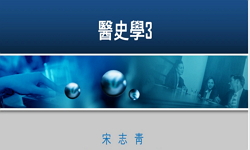The aim of this study is to look at how pepper was used in traditional medicine. In other words, this study aims to take a look at the process by which the medicinal nature & efficacy of pepper in traditional society was perceived and arranged through...
http://chineseinput.net/에서 pinyin(병음)방식으로 중국어를 변환할 수 있습니다.
변환된 중국어를 복사하여 사용하시면 됩니다.
- 中文 을 입력하시려면 zhongwen을 입력하시고 space를누르시면됩니다.
- 北京 을 입력하시려면 beijing을 입력하시고 space를 누르시면 됩니다.

전통사회에서 외래종 작물인 고추의 효능 인식 - 한국 전통의서를 중심으로 - = Recognition of Medicinal Efficacy of Pepper as an Introduced Species in Traditional Medicine
한글로보기https://www.riss.kr/link?id=A104507351
- 저자
- 발행기관
- 학술지명
- 권호사항
-
발행연도
2012
-
작성언어
Korean
- 주제어
-
등재정보
KCI등재
-
자료형태
학술저널
- 발행기관 URL
-
수록면
12-18(7쪽)
-
KCI 피인용횟수
0
- DOI식별코드
- 제공처
-
0
상세조회 -
0
다운로드
부가정보
다국어 초록 (Multilingual Abstract)
The aim of this study is to look at how pepper was used in traditional medicine. In other words, this study aims to take a look at the process by which the medicinal nature & efficacy of pepper in traditional society was perceived and arranged through the aspects of the use of pepper as an exotic crop for treating diseases. This study investigated cases of using pepper for medical treatments by referring to books on traditional medicine in Korea. The old records about pepper are mainly in empirical medical books from the late Chosun dynasty. Nevertheless, the records about pepper tend to decrease in medical text as time goes by. Such a phenomenon can be attributable to the fact that people began to use pepper for daily food life rather than for medicinal purposes. Pepper was used mostly for digestive trouble such as vomiting, diarrhea, and stomachaches, and it was also applied to mental and aching diseases caused by the sound of body fluids remaining in the stomach. In addition, there were many cases where pepper was used externally for surgical disorders. Such symptoms for treatment are linked to, or in a complementary relationship with, research results in modern times. Boiled pepper was generally taken in the traditional herbal decoction method, and in the case of surgical diseases, it was applied externally. The cases of using old pepper, using pepper with seeds or without seeds, and using pepper mixed with sesame oil belong to a sort of herbal medicine processing, which usually aimed at changing the medicinal nature of pepper. In addition, in relation to the eating habits at that time, pepper was used as seasoning and to make red pepper paste with or without vinegar. There are two words used for pepper in the medical textbooks, 苦椒 (gocho) and 烈棗 (yeoljo). These words are translated into Korean as gochu, so we can identify this word as a nickname for pepper.
참고문헌 (Reference)
1 한국한의학연구원, "한의고전명저총서DB"
2 조은자, "한국전통식품연구" 성신여자대학교 출판부 145-146, 2008
3 김종덕, "약이 되는 우리 먹거리" 아카데미북스 65-99, 2010
4 신지연, "신지식재산권의 동향조사 및 효율적 정책 대응 방안" 특허청 69-84, 2010
5 손정일, "고춧가루를 이용한 기능성 소화불량의 치료" 8 (8): 208-209, 2002
6 최효선, "고춧가루(red pepper)가 위배출능에 미치는 영향" 대한소화기 기능성질환∙운동학회 11 (11): 33-37, 2005
7 배명희, "고추의 歷史와 品質評價에 관한 硏究" 1 (1): 187-202, 1984
8 김종덕, "고추(番椒, 苦椒)의 語源연구" 한국의사학회 12 (12): 147-167, 1999
9 안상우, "本草書의 系統과 本草學 發展史" 한국의사학회 18 (18): 39-54, 2005
10 김종덕, "‘고쵸’에 대한 논쟁" 한국농업사학회 8 (8): 105-126, 2009
1 한국한의학연구원, "한의고전명저총서DB"
2 조은자, "한국전통식품연구" 성신여자대학교 출판부 145-146, 2008
3 김종덕, "약이 되는 우리 먹거리" 아카데미북스 65-99, 2010
4 신지연, "신지식재산권의 동향조사 및 효율적 정책 대응 방안" 특허청 69-84, 2010
5 손정일, "고춧가루를 이용한 기능성 소화불량의 치료" 8 (8): 208-209, 2002
6 최효선, "고춧가루(red pepper)가 위배출능에 미치는 영향" 대한소화기 기능성질환∙운동학회 11 (11): 33-37, 2005
7 배명희, "고추의 歷史와 品質評價에 관한 硏究" 1 (1): 187-202, 1984
8 김종덕, "고추(番椒, 苦椒)의 語源연구" 한국의사학회 12 (12): 147-167, 1999
9 안상우, "本草書의 系統과 本草學 發展史" 한국의사학회 18 (18): 39-54, 2005
10 김종덕, "‘고쵸’에 대한 논쟁" 한국농업사학회 8 (8): 105-126, 2009
11 한국한의학연구원, "digital 本草集成(CDROM)"
12 Na SK, "The Effect of Red Pepper and Capsaicinon Gastric Emptying" 33 (33): 496-503, 1999
동일학술지(권/호) 다른 논문
-
연구논문 : 시판 라면류의 선택 속성이 만족도에 미치는 영향에 관한 연구 -어린이 및 청소년을 중심으로
- 韓國食生活文化學會
- 정효선
- 2012
- KCI등재
-
패밀리레스토랑의 전환 비용이 고객만족도 및 전환 의도에 미치는 영향 연구 - 고객 지식 및 다양성 추구 성향의 조절효과를 중심으로 -
- 한국식생활문화학회
- 정효선
- 2012
- KCI등재
-
- 한국식생활문화학회
- 박인덕
- 2012
- KCI등재
-
- 한국식생활문화학회
- 최성은
- 2012
- KCI등재
분석정보
인용정보 인용지수 설명보기
학술지 이력
| 연월일 | 이력구분 | 이력상세 | 등재구분 |
|---|---|---|---|
| 2026 | 평가예정 | 재인증평가 신청대상 (재인증) | |
| 2020-01-01 | 평가 | 등재학술지 유지 (재인증) |  |
| 2017-01-01 | 평가 | 등재학술지 유지 (계속평가) |  |
| 2014-12-16 | 학술지명변경 | 외국어명 : Journal of The Korean Society of Dietary Culture -> Journal of The Korean Society of Food Culture |  |
| 2013-01-01 | 평가 | 등재 1차 FAIL (등재유지) |  |
| 2010-01-01 | 평가 | 등재학술지 유지 (등재유지) |  |
| 2008-01-01 | 평가 | 등재학술지 유지 (등재유지) |  |
| 2005-01-01 | 평가 | 등재학술지 선정 (등재후보2차) |  |
| 2004-01-01 | 평가 | 등재후보 1차 PASS (등재후보1차) |  |
| 2003-01-01 | 평가 | 등재후보 1차 FAIL (등재후보1차) |  |
| 2002-01-01 | 평가 | 등재후보학술지 유지 (등재후보1차) |  |
| 2000-07-01 | 평가 | 등재후보학술지 선정 (신규평가) |  |
학술지 인용정보
| 기준연도 | WOS-KCI 통합IF(2년) | KCIF(2년) | KCIF(3년) |
|---|---|---|---|
| 2016 | 0.8 | 0.8 | 0.87 |
| KCIF(4년) | KCIF(5년) | 중심성지수(3년) | 즉시성지수 |
| 0.87 | 0.89 | 1.461 | 0.11 |




 ScienceON
ScienceON






